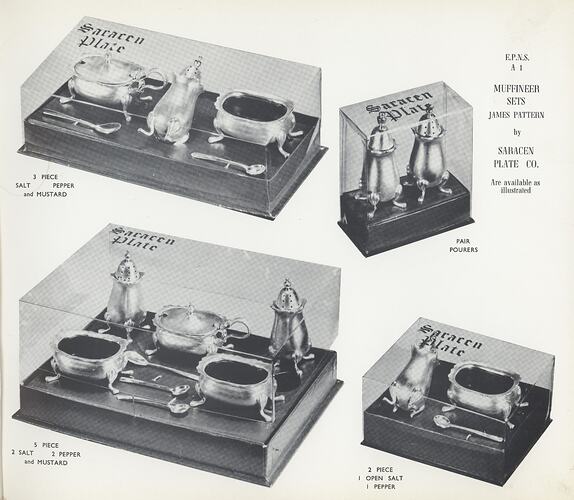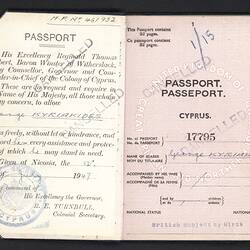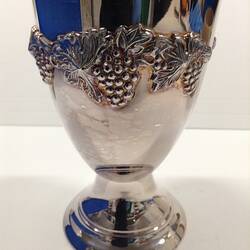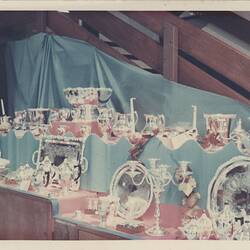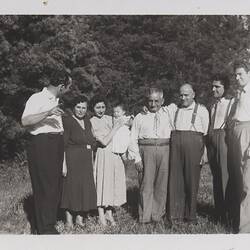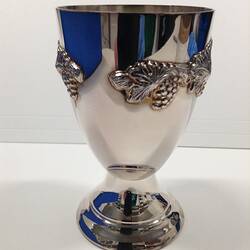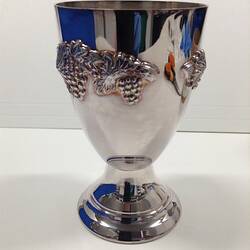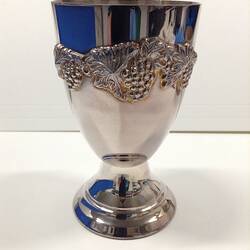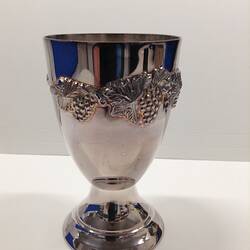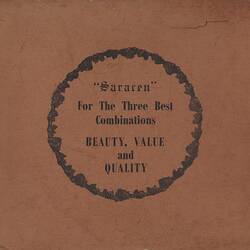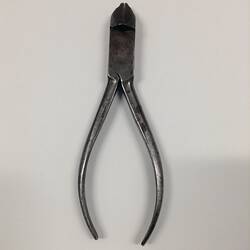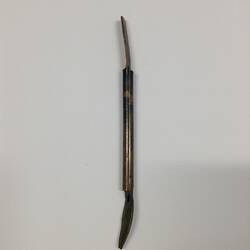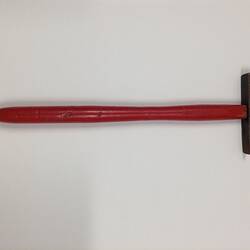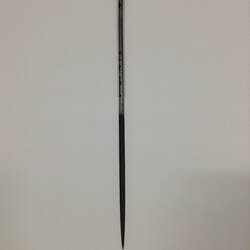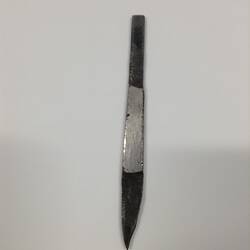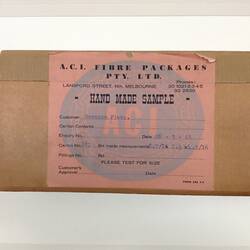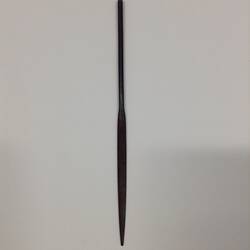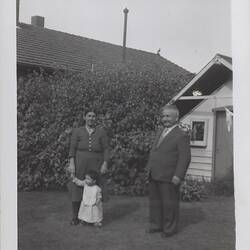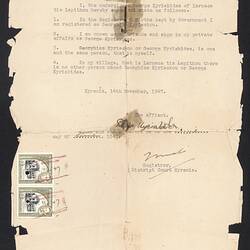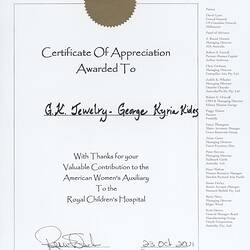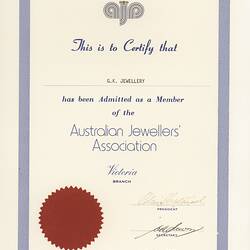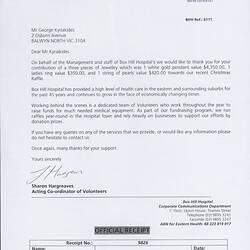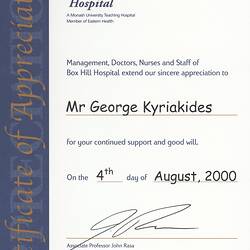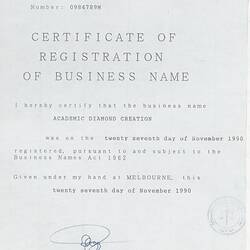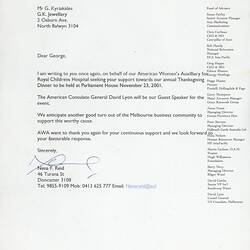Summary
The Saracen Plate Company was founded by Cypriot migrant George Kyriakides in 1952. It grew from small beginnings in Malvern to a property at 152 Lygon Street, Carlton and traded there until 1974.
George Kyriakides migrated to Australia on the 1 January, 1948, leaving his home country of Cyprus for the promise of new opportunities in Australia. His silversmith skills were learned from a young age, working with his father to supplement the family income. George was listed as a farmer on the incoming passenger lists, and did not mention his other jewellery making skills to the officials. The Saracen Plate Company was founded in 1952, from small beginnings in the garage of his family home in the Melbourne suburb of Malvern. The business grew quickly and facilitated the purchase of the property at 152 Lygon Street, Carlton. This original dwelling on the site was demolished and rebuilt as both a workshop and living space for the growing Kyriakides family. The Saracen Plate Company specialised in a style of silver plate known as 'Sheffield Reproduction', which featured in many homes as commemorative gifts or serving ware. Their product catalogue was diverse, and ranged from ceremonial platters, jugs and trophies to goblet sets, serving trays and small table serving ware. Pieces were often commissioned and engraved as trophies for commemoration and sporting achievements. The pieces produced were often ornate, highly polished and featured the distinctive grapes and leaves pattern as decorative edging. This distinctive pattern was developed in consultation with the well-known enamel artist Myra Skipper, later of Monsalvat. The business was primarily a wholesale manufacturer and supplied prominent Victorian department stores and Jewellers, such as Myer, Dunklings and Prouds. The business was extremely successful and gave George the opportunity to provide for his family with a skill he was passionate about. The wholesale business also provided a number of local residents with employment and the chance to apprentice in a busy workshop environment. During the early 1970s there were issues arising over the impurity of the silver that was available for purchase in Australia, and as a result, Saracen Plate Company was forced to import pure silver from overseas. This proved to be difficult, due to extensive shipping timeframes. Forecasting for this became difficult, and was the precursor to the sale of the Saracen Plate Company in 1974. Once the sale of Saracen Plate Company was finalised, George traded for a short time under the name Ionian Trading Company, until he fully established a jewellery business under the name G. K. Jewellery. G. K. Jewellery traded under the same guidelines as Saracen Plate Company - as a wholesaler to other retail jewellers. George would continue under this name until his retirement. Running a small business as a jeweller came with its own set of issues. Gold bullion needed to be purchased with cash, and there was immense fluctuation around the price of an ounce on a daily basis. This meant that the business needed to have a large amount of cash reserves, and the ability to use those reserves with a day's notice. Much of the work produced under G.K. Jewellery was based around wholesale orders from his catalogues, but George himself would take on private commissions from the Greek and Cypriot community for more traditional and personalised pieces. In his later years George became well known for his substantial gifts to organisations such as the Box Hill Hospital, Agapi Aged Care and Fronditha Care. These gifts were often used a prizes in the annual fundraising events. George continued to practise jewellery-making until his death in 2006.More Information
-
Keywords
-
Authors
-
Article types
